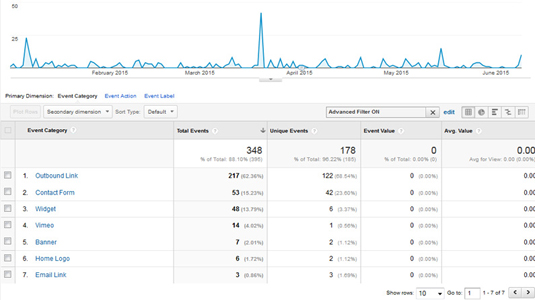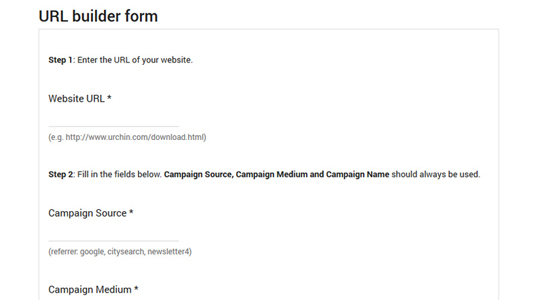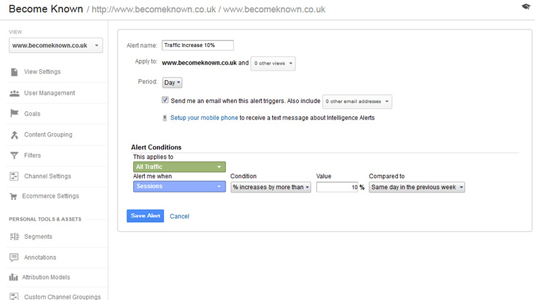5 features of Google Analytics you should be using
SEO expert James Yorke runs through some useful analytics tools that you may not be aware of.
Google Analytics was first released in November 2005 and the main features as part of this original release were rather basic. Since then, the tool has improved incredibly and now has so many features that you would be forgiven for missing them and not using the tool to its full potential. It is now a business measurement platform and can be used with websites, mobile apps and a huge number of internet-connected devices.
Here are some of those features that you may not be aware of but should be making full use of.
01. Views
Generally you will have an account for your organisation's Google Analytics and within this a property per website. However, what you may not be aware of is how useful it can be to have multiple views relating to the same property/website.
One common view is a master view which is the raw data and so will include everything such as spam traffic referrals and internal website traffic.
You may have different views to let you see specific sets of data such as from the /blog section on the website, a /sales website section and a view to test before applying filters, goals or other such things to your other views.
Views often use filters are a great way of narrowing down data within Google Analytics. There are a number of reasons that you would want to do this. They are a great way of ensuring that the data you are looking at is relevant as it can be used to exclude traffic such as that which comes from internal staff networks and that which is 'spammy' in nature.
02. Events

How people use websites has changed a lot over the years and much more happens on a page. This has made the Pageview metric much less important than it once was. Events are used as a way to track in-page actions such as clicks on external links, video and form usage or any other in-page interaction.
Out of the box, Google Analytics does not track such things but one way of setting up Events is by using Google Tag Manager. This is designed to provide marketers with an interface to do this rather than having to go to their development team every time they need something new tracked.
03. Campaigns

Would you like to set-up off-site tracking on platforms such as social media and email marketing? One way of viewing information such as this is to set-up URLs that are used in various places using Google's URL builder tool. This creates a long URL with data such as the 'Campaign', 'Source' and more so that you can track which specific platforms generate the best performing traffic.
For example, you may wish to track the performance of email marketing. Using the URL builder will allow you to create links that can be tracked via your Google Analytics account.
04. Custom dashboards
Do people performing a wide range of roles in your organisation require Google Analytics data? Perhaps the CEO, marketing manager and development team all need this and, if so, their needs are likely to be different.
The dashboard is the first screen that is seen when someone logs in and it is possible to create custom dashboards to quickly access different types of data. CEOs will probably want high level traffic and conversion data for the past 30-90 days, marketing managers may require specific sources of traffic and conversions in addition to Pageviews and time spent on the website and development teams data such as the number of 404 pages visited and more.
05. Intelligence Events

These help to alert you to key events within your data so that you can potentially react to them quickly. One obvious application of this is to monitor an increase in traffic on a given day. For example, a website you work on might receive a 10 per cent increase and you can react to this by creating content which maximises it.
You may also set up an alert to inform you if the traffic level reduces significantly. Development work may have taken place on a website and result in the Google Analytics code being removed from the website. This would allow you to quickly fix this kind of error and prevent you from losing hours, days or even weeks of invaluable data.
Conclusion
You may have seen many of these parts of Google Analytics many times and often not had the time to investigate what they are and how they can help you to do your job. Google Analytics is an extremely powerful tool but takes an investment of time to get the most out of it. Hopefully this article has given you more knowledge to make the data driven side of your life a bit easier.
Words: James Yorke
James Yorke is a freelance digital marketer under the name of Become Known providing, amongst other things, SEO and Google Analytics audits and websites.
Like this? Read these!
- 10 steps to engaging user experience
- Brilliant Wordpress tutorial selection
- Free tattoo fonts for designers

Thank you for reading 5 articles this month* Join now for unlimited access
Enjoy your first month for just £1 / $1 / €1
*Read 5 free articles per month without a subscription

Join now for unlimited access
Try first month for just £1 / $1 / €1
Get the Creative Bloq Newsletter
Daily design news, reviews, how-tos and more, as picked by the editors.

The Creative Bloq team is made up of a group of art and design enthusiasts, and has changed and evolved since Creative Bloq began back in 2012. The current website team consists of eight full-time members of staff: Editor Georgia Coggan, Deputy Editor Rosie Hilder, Ecommerce Editor Beren Neale, Senior News Editor Daniel Piper, Editor, Digital Art and 3D Ian Dean, Tech Reviews Editor Erlingur Einarsson, Ecommerce Writer Beth Nicholls and Staff Writer Natalie Fear, as well as a roster of freelancers from around the world. The ImagineFX magazine team also pitch in, ensuring that content from leading digital art publication ImagineFX is represented on Creative Bloq.
